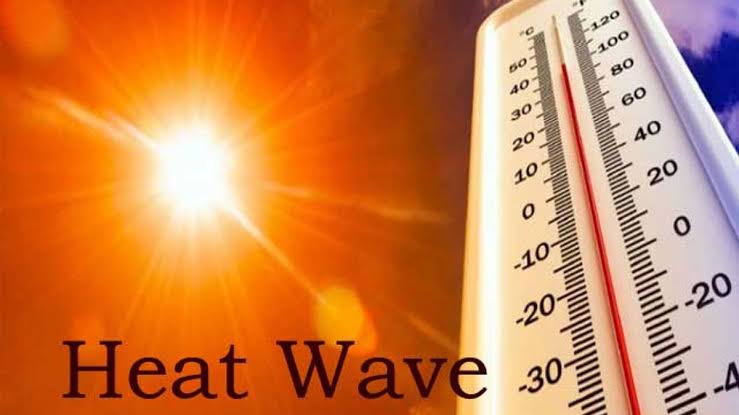Weather ( Summer Season)
Sandeep Dhand Ludhiana
Heatwaves, prolonged periods of excessively hot weather, are often dismissed as mere inconveniences or temporary discomforts. However, these intense heat spells can have devastating and far-reaching consequences, qualifying them as natural disasters on par with hurricanes, earthquakes, and floods. This article delves into the multifaceted threats posed by heatwaves, highlighting their impact on human health, ecosystems, economies, and infrastructure.
Human Health at Stake
One of the most immediate and severe consequences of heatwaves is their impact on human health. High temperatures can exacerbate pre-existing health conditions, such as cardiovascular and respiratory diseases. Heatstroke and dehydration are direct threats, especially to vulnerable populations such as the elderly, children, and those with chronic illnesses.

During a heatwave, the body’s ability to regulate its temperature through sweating can become overwhelmed, leading to heat exhaustion or heatstroke, both of which can be fatal if not promptly treated. For instance, the 2003 European heatwave is estimated to have caused over 70,000 excess deaths, predominantly among the elderly. This event underscored the urgent need for public health interventions and infrastructure designed to mitigate the effects of extreme heat.
Strain on Healthcare Systems
Heatwaves put tremendous pressure on healthcare systems. Hospitals and emergency services often face a surge in patients suffering from heat-related illnesses, which can lead to overcrowded facilities and strained medical resources. This situation is exacerbated in regions with already limited healthcare infrastructure.
In addition to treating heat-related conditions, healthcare providers must also manage an increase in the severity of other illnesses. For example, patients with cardiovascular conditions may experience heightened symptoms due to the added stress on their bodies. The combined effect of these factors can push healthcare systems to their limits, leading to critical shortages of medical supplies and personnel.
Environmental Degradation
The environmental impact of heatwaves is profound. Prolonged high temperatures can lead to drought conditions, which in turn affect water supplies for both agricultural and personal use. Crops wither under the scorching sun, leading to reduced yields and threatening food security. For instance, the 2010 Russian heatwave resulted in the loss of one-third of the country’s wheat crop, prompting a temporary ban on grain exports and contributing to a global increase in food prices.
Moreover, heatwaves can exacerbate wildfires, creating a vicious cycle of environmental destruction. Dry, hot conditions provide the perfect breeding ground for wildfires, which can devastate large areas of forest, destroy homes, and lead to loss of life. The 2019-2020 Australian bushfire season, known as “Black Summer,” was fueled by unprecedented heat and dryness, resulting in over 18 million hectares of land being burned and significant loss of biodiversity.
Economic Consequences
The economic impact of heatwaves is significant and multifaceted. Agriculture, being heavily dependent on weather conditions, is one of the most affected sectors. Crop failures lead to increased food prices, which can contribute to economic instability and food insecurity, particularly in developing countries.
The energy sector also suffers during heatwaves. As temperatures soar, the demand for electricity to power air conditioning systems spikes, often leading to power outages due to the overstressed grid. In addition, high temperatures can reduce the efficiency of power plants, particularly those relying on water for cooling, further straining energy supplies. These disruptions can have a ripple effect on businesses and households, leading to significant economic losses.
Urban areas face additional challenges. The “urban heat island” effect, where city areas become significantly warmer than their rural surroundings, can make heatwaves even more unbearable in cities. This can lead to increased costs for cooling, reduced productivity as workers struggle to cope with the heat, and damage to infrastructure such as roads and railways, which can buckle under extreme temperatures.
Social Inequities
Heatwaves also exacerbate social inequalities. Low-income communities are often the hardest hit, as they may lack access to air conditioning, live in poorly insulated homes, and have limited resources to cope with the heat. This disparity was starkly illustrated during the 1995 Chicago heatwave, where most of the fatalities occurred in economically disadvantaged neighborhoods.
Addressing the challenges posed by heatwaves requires a multi-faceted approach. Urban planning should incorporate green spaces to mitigate the urban heat island effect, while building codes should ensure that homes are adequately insulated against both heat and cold. Public health campaigns can raise awareness of the dangers of extreme heat and provide guidelines for staying safe.
Mitigation and Adaptation Strategies
To mitigate the impacts of heatwaves, governments and communities must invest in both short-term and long-term strategies. Immediate measures include establishing cooling centers where vulnerable populations can find relief, and ensuring that emergency services are adequately staffed and equipped to handle surges in heat-related health issues.
Long-term strategies involve urban planning and infrastructure development. Increasing the amount of green space in urban areas can help to cool cities naturally. Investing in renewable energy sources can reduce the strain on power grids during peak demand periods. Additionally, enhancing water management systems to ensure a reliable supply during drought conditions is crucial.
Public awareness campaigns are essential in educating the population about the risks of heatwaves and how to protect themselves. These campaigns should target vulnerable groups and provide clear, actionable advice on staying cool, hydrated, and safe during extreme heat events.
Conclusion
Heatwaves are more than just uncomfortable weather events; they are significant disasters that pose severe threats to human health, the environment, and the economy. As climate change continues to increase the frequency and intensity of heatwaves, it is imperative that we recognize them as the serious hazards they are and take comprehensive action to mitigate their impact. Through a combination of immediate responses and long-term planning, we can better protect our communities and ensure resilience in the face of these increasingly common climate events.
